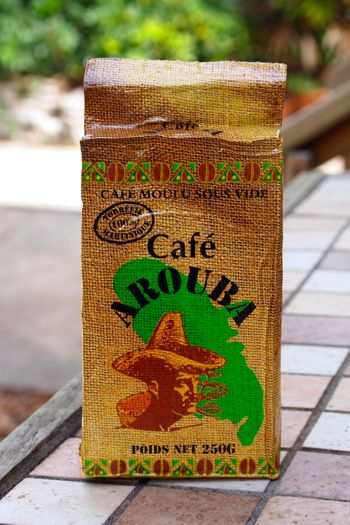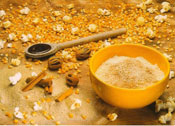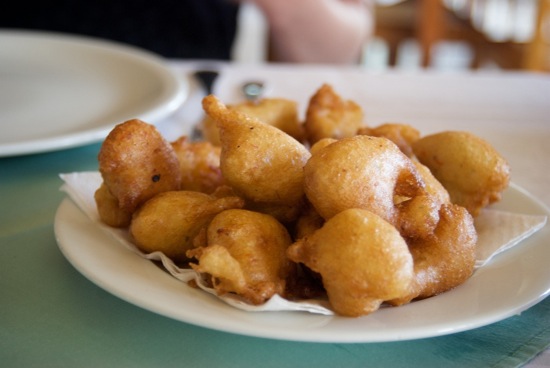Tracing the Roots of America’s Coffee Addiction to Martinique: Taste of the Caribbean
Here in the U.S., a fictional Colombian coffee farmer named Juan Valdez has long personified the world’s second most popular drink (water is #1), though history suggests a more representative character might answer to Pierre, wear a bakoua, and look something like the guy gracing the label of Café Arouba.
This story starts with a crime perpetuated nearly 300 years ago, includes a pirate attack and a near mutiny, and ends with most of us being utterly incapable of starting the day without a Cup of Joe.
The Crime
In 1720, a French naval officer named Gabriel Mathieu de Clieu stationed in the French Caribbean was on leave in Paris. While there, he had occasion to enjoy an audience with King Louis XIV, during which he came to admire several coffee trees the King had acquired. The young officer petitioned the King to allow him to take a seedling back to Martinique. The King refused, so old Garbriel simply swung by later when no one was around and made off with the plant.
It’s important to note here that at the time of the theft, coffee barely existed in the Western World. Tea was #1, with Europe slowly waking up to the wonders of coffee after a centuries-long ban on the exportation of coffee beans imposed by the Arabs who controlled the plant’s native points of origin in Africa and the Middle East.
The European powers were all keen on developing new cultivation areas to mass-produce coffee as a major cash crop. De Clieu had similar designs…
The Treacherous Journey
Sailing away from Paris with his ill-gotten prize safely enclosed in a glass case to minimize any damage from the salty sea air, I imagine de Clieu was feeling pretty good. The feeling would not last.
Tunisian pirates attacked, but de Clieu and crew fought them off.
A tropical storm threatened to wash the plant overboard, but de Clieu tied it down.
A rival officer tried to destroy the plant, but de Clieu saved his prize from major damage.
Diminishing fresh water supplies eventually led to rationing. That didn’t deter de Clieu either. From his journal:
Water was lacking to such an extent that for more than a month, I was obliged to share my scanty ration with the plant upon which my happiest hopes were founded and which was the source of my delight.
Oh yeah, this guy was on a mission!
Eventually, de Clieu and crew landed in Martinique where the fabled coffee tree was re-planted and flourished like few plants ever have. In 1726, the first harvest was ready. By 1777, there were close to 20 million coffee trees on Martinique alone!
Now, as with any such long-ago legendary tale, the particulars vary by source. Did de Clieu really steal the plant? Was there really a pirate attack? No one knows for sure.
Of one detail, though, most scientists who study this kind of thing agree: 90% of the world’s coffee enjoyed today can be traced back to this one very special tree, planted in Martinique.

Seeds that started with this one plant were spread across the Caribbean, such that any coffee grown anywhere in the region, aside from Suriname and Guyana, are said to originate from Martinique.
Yes, even that marvelous Blue Mountain Coffee grown and produced in Jamaica has a wee bit of French Creole in it!
So truly, to get to the origins of the coffee that most of us truly enjoy one must travel to Martinique. These days, the millions of coffee trees have been greatly reduced, sugarcane and bananas now the top cash crops here. You can still find a handful of 100% Martinican coffees, though, including Café Arouba. A visit to the Musee Du Cafe et Du Cacao in Trois-Ilets is also a must. There, you’ll get a bit more detail on the de Clieu legend and learn about Martinique’s once flourishing coffee industry.
Ever since I first heard this story, though, I’ve dreamed of trekking around Martinique to find the exact spot where the world’s most legendary coffee tree was planted. Official records indicate the tree was planted in an area known then as Preebear, but where’s that? What’s growing there now? Are there any lingering vestiges of the ancient tree?
All questions I hope to answer on a future uncommon journey to Martinique…



